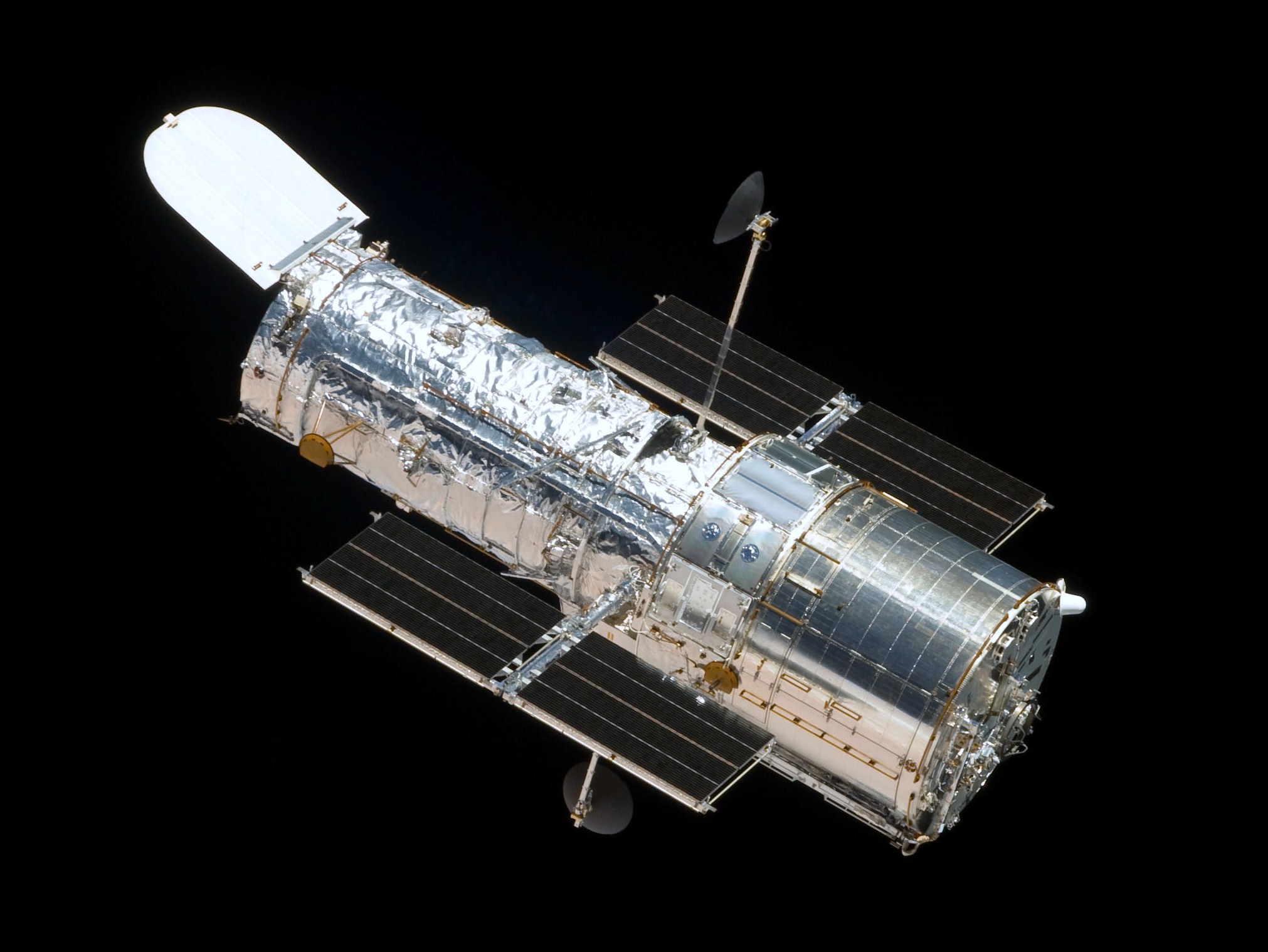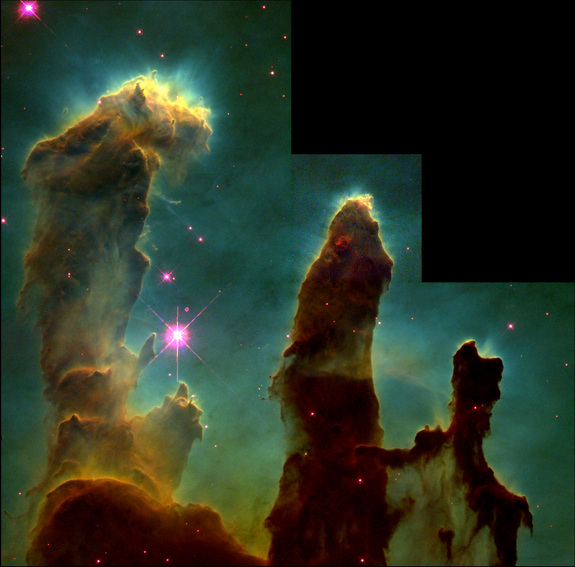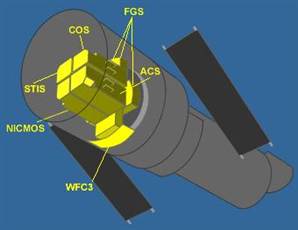The Hubble Space Telescope
Skipping
ahead a few hundred years the telescopes of
the contemporary age far exceed the relatively simple
refracting telescopes of
Galileo’s time. The most famous telescope currently in
operation is the Hubble
space telescope. Named after Edwin Hubble for his
contribution to astronomy; the
most notable of which were discovering other galaxies, and
contributing to the
expanding universe theory.

The
Hubble’s largest advantage over other telescopes
is that it is outside of the Earth’s atmosphere. The
atmosphere bends light for
ground based telescopes. This effect is similar to the
distortion that occurs
when you look at your hand underwater. Beyond this Hubble
is not limited to
viewing the sky only when it is dark outside, it merely
has to face away from
the sun.
The
technological capability of the Hubble sports is
a marvel of engineering. To start with it collects light
on its primary mirror
which is 2.4 meters in diameter. This light is reflected
onto a secondary mirror
which then focuses the light into a hole where various
instruments process the
data.
The wide
field camera 3 observes 3 types of light,
near ultraviolet, near infrared, and visible. This camera
and its predecessor the
wide field camera 2 produced many of the famous images
associated with the Hubble such as the pillars of creation
seen below. The wide field camera has a
higher resolution and field of view then the other
instruments aboard the
Hubble.

The cosmic
origins spectrograph (cos) is a
spectrograph that focuses on ultraviolet light. Unlike the
wide field camera 3
the cos does not take images of objects. Spectrograph
break colors and lights
apart into different intensities which derive information
about the objects
such as density, velocity, chemical composition,
temperature, and more.
